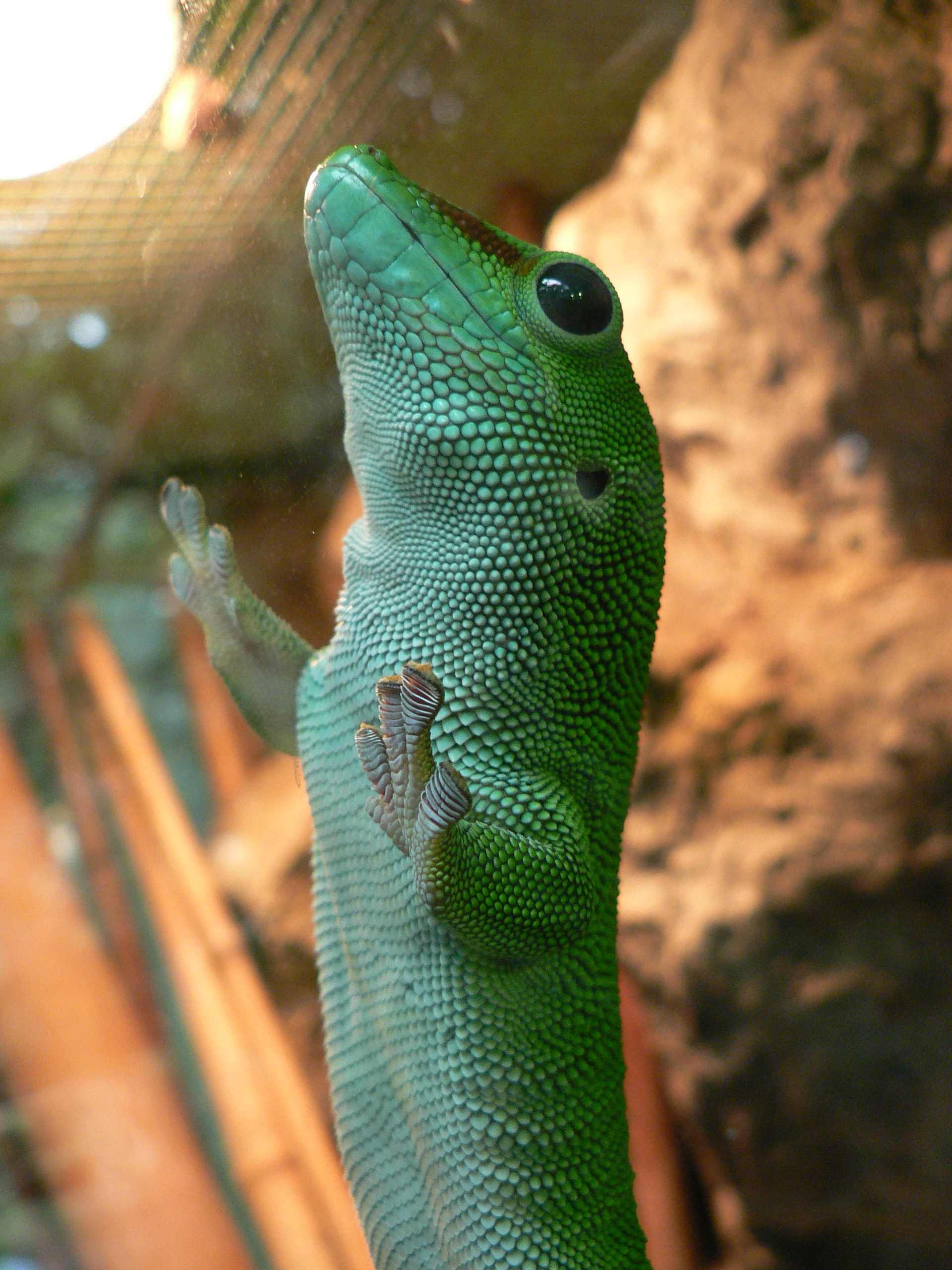- Madagascar giant day gecko
Taxobox
name = Madagascar giant day gecko

image_width = 210px
regnum =Animal ia
phylum = Chordata
classis = Reptilia
ordo =Squamata
familia =Gekkonidae
subfamilia =Gekkoninae
genus = "Phelsuma "
species = "Phelsuma madagascariensis"
subspecies = "P. m." "grandis"
trinomial = "Phelsuma madagascariensis grandis"
trinomial_authority = Gray, 1870Madagascar giant day gecko ("Phelsuma grandis" Gray, 1870) is a diurnal
arboreal subspecies of the Madagascar day geckos (Phelsuma madagascariensis ssp.). It is found in areas of tropical and subtropical forest in northernMadagascar . The Madagascar giant day gecko feeds on various invertebrates and very small vertebrates and nectars.Scientific synonyms:
*"Phelsuma grandis" Gray, 1870
*"Phelsuma madagascariensis venusta" Mertens, 1964
*"Phelsuma madagascariensis notissima" Mertens, 1970 (fide Meier, 1982)Description
This lizard typically reaches a total length of about 28 cm, though larger specimens have been found. The body colour is bright green or, rarely, bluish green. A red stripe extends from the nostril to the eye. On the back there are red coloured dots or bars. These red markings are quite variable, and in some cases, completely absent, though the line extending from the nostril to the eye is always present. Some specimens may have small blue spots. Young individuals of the species often exhibit much more red than their parents, but as time passes, many of the markings fade, to leave those that will remain until the gecko dies. The underside of these animals is a creamy white ranging to an eggy yellow. A stressed animal is more likely to have darker colouration, making it appear as though there are orange parts to the red colouration, and the green appears far darker.
Distribution
This species is widely distributed in northern and northwest Madagascar. It can also be found on some of the off shore islets. There are a few recorded populations of this species also in Florida, and Hawaii, introduced by accident, which seem to like the climate in these locations. It can also be found in Mauritius, mainly in Floreal and in the upper Plain Whilems, but it is thought that it was introduced there too.
Habitat
"Phelsuma grandis" is often found on different trees where it can be seen basking. They also inhabit human dwellings due to the number of appropriate basking spots, and the level of insect activity which these dwellings attract. The climate is rather dry, though heavy rainfalls are quite common. This means that there is a constant level of high humidity throughout the year.
Diet
These day geckos feed on various insects and other invertebrates, and occasionally have been recorded consuming small vertebrates. They also like to lick soft, sweet fruit, pollen and nectar. Geckos in the wild and in captivity have been observed consuming their own young.
Behaviour
Like most "Phelsuma" species, the males can be quite quarrelsome and territorial and will not accept other males in their neighbourhood. In captivity, where the females cannot escape, the males can also sometimes seriously wound a female. In this case the male and female must be separated.
Reproduction
The breeding season is between November and the first weeks of May. During this period, the females lay up to 6 pairs of eggs. At a temperature of 28°C, the young will hatch after approximately 60–65 days. The juveniles measure 70 mm and reach sexual maturity after one year.
Care and maintenance in captivity
These animals should be housed in pairs or singles and need a large, well planted terrarium. The temperature should be between 25 and 28°C, never falling below 17, and never exceeding about 36. The humidity should be maintained between 65 and 75%. These geckos desiccate easily and quickly, so falling below this range can be dangerous. Keeping the geckos at humidities above this range can be done, but levels which are too high can introduce dangerous bacteria quickly. In captivity, these animals can be fed with crickets, wax moths, fruit flies, mealworms and houseflies.
References
#Henkel, F.-W. and W. Schmidt (1995) "Amphibien und Reptilien Madagaskars, der Maskarenen, Seychellen und Komoren". Ulmer Stuttgart. ISBN 3-8001-7323-9
#McKeown, Sean (1993) "The general care and maintenance of day geckos". Advanced Vivarium Systems, Lakeside CA.
Wikimedia Foundation. 2010.
